Updated
about 2 hours ago
Federal Environment Minister Greg Hunt has given the
go-ahead to the expansion of the Abbot Point Coal Terminal near Bowen in
north Queensland, making it one of the world's largest coal ports.
Key points:
- The expansion will make it one of the world's largest coal ports
- Approval has been granted with strict environmental conditions
- Conservationists
lobbied hard to have port project rejected, saying it puts the Great
Barrier Reef and surrounding environment at risk
The controversial project involves dredging 1.1 million cubic
metres of spoil near the Great Barrier Reef Marine Park, which will then
be disposed of on land.
The
approval has been granted with strict conditions, the Federal Government said.
Abbot
Point is located about 25 kilometres north of Bowen on the north
Queensland coast, about 400 kilometres from the vast coal reserves of
the Galilee Basin.
The expansion would enable coal to be shipped from proposed mining projects in the Galilee Basin,
like Adani's $16 billion Carmichael mine.
The
Carmichael mine is Australia's biggest mining project and consists of
six open-cut pits and up to five underground mines, and will supply
Indian power plants with enough coal to generate electricity for up to
100 million people.
Adani is one of the proponents of the Abbot
Point terminal, as it plans to ship coal that would potentially come out
of its Carmichael mine.
The Abbot Point port expansion was
proposed because there was the expectation that there would be millions
of tonnes of coal to go offshore.
Strict environmental conditions imposed
There
have been a number environmental concerns with the port's expansion,
particularly surrounding its location and the proximity to the Great
Barrier Reef.
The terminal is on the edge of the reef, about 19 kilometres from the closest coral.
There
had been approvals that were given and reneged upon, and the project
had been submitted in different forms to gain approval.
When the
new State Labor Government came into power earlier this year, it said
the plan to dredge and dump spoil would not go ahead.
It put a new
proposal forward to the Federal Environment Minister, which outlined
plans to dump that spoil on land, rather than go back into the ocean.
Today, Mr Hunt approved this proposal, which allows the port expansion to proceed.
Mr
Hunt has put strict environmental conditions on the expansion, such as
monitoring the water quality around the area, monitoring ship movements,
and making sure that dredge spoil does not go back into the ocean.
I have made it very clear that this is a private company and
... Adani must get the finance independently if they're going to go
ahead.
Queensland Premier Annastacia Palaszczuk
In a statement, Adani welcomed today's announcement by Mr Hunt.
"The
expansion of Abbot Point, the lifeblood of Bowen, is key to Adani's
plans to deliver 10,000 direct and indirect jobs and $22 billion in
taxes and royalties to Queensland," the statement said.
"Adani
welcomed and willingly supported the move to an onshore disposal of
dredged material last year, when a site not previously available became a
viable option for proximate, well-managed disposal of dredged material.
"This is the third time a well
-managed,
strictly regulated, science and evidence-based expansion approval has
been the subject of a state and federal government approval process
since 2010.
"The approval given by Minister Hunt to the Queensland
Government mirrors the approvals given to Adani's mine at Carmichael
and North Galilee Basin Rail projects, in that they reflect the
strictest, world's best practice environmental safeguards.
"Adani,
working with the Queensland Government, is confident that the strict
conditions placed on this project will enable the jobs and economic
benefits that will flow from the expansion of this vital port for
exports from our state to proceed."
But Queensland Premier Annastacia Palaszczuk said the expansion would not go ahead unless Adani could afford it.
"Once
again I have made it very clear that this is a private company and the
private company Adani must get the finance independently if they're
going to go ahead," she said.
"There will be no State Government, no taxpayers' money, going towards this project."
Ms Palaszczuk also said the State Government would be attaching a number of strict environmental conditions.
"That
is a matter that the state Environment Department is currently
assessing at the moment - we must protect our iconic Great Barrier
Reef," she said.
WWF fear for wildlife in 'high conservation area'
Supporters have said the expansion would provide thousands of jobs and pump millions into the local economy.
Local
federal MP George Christensen tweeted the approval was "good news" for
central and north Queensland, adding that it delivered "coal for
Christmas".
Queensland Resources Council chief executive Michael
Roche said in a statement the latest approval was another important step
in the creation of thousands of jobs in the region.
"This
environmental approval with strict conditions, which follows an
extensive public consultation process, paves the way for the
construction of a second terminal at Abbot Point for exports to a
coal-hungry India," he said.
"The conditions also align with the Reef 2050 plan that ensures protection of the iconic Great Barrier Reef."
But
conservationists had lobbied hard to have the project rejected, saying
it would put the reef and surrounding environment at risk.
Conservation groups said they were disappointed with the latest decision.
World Wildlife Fund spokeswoman Louise Matthiesson said the port was in a delicate environmental area.
"Abbot Point is on the edge of the Great Barrier Reef World Heritage area," she said.
"We
know there are turtle nesting beaches, there are dugongs, there are
snub fin dolphins, there are thousands of endangered birds.
"This is a very high conservation area and it's not an appropriate site for dredging or a coal port development."
Greenpeace reef campaigner Shani Tager said in a statement the approval to dredge was irresponsible for the reef.
"It's
illogical to expand the port to make capacity for the proposed
Carmichael mine, because it is a dead-end prospect," she said.
"Adani hasn't got the $16 billion [for the Carmichael mine] - no-one's lending it to them and coal prices are tanking.
"Even the International Energy Agency (IEA) is questioning the project.
"Queensland
Labor promised at the last election not to proceed with Abbot Point
unless the Carmichael mine achieved financial closure.
"The mine has not found any backers, and the IEA has declared it is not likely to be operational by 2020, if ever."
Adani's credit rating may be downgraded to 'junk status'
At
the same time as the Federal Government approved the port expansion, a
leading credit rating agency threatened to downgrade Adani's credit
rating to junk status.
Global ratings agency Moody's had warned
Adani it was considering downgrading debt associated with the Abbot
Point coal terminal.
Adani's Abbot Point Coal Terminal is on the lowest rung of investment grade ratings.
A downgrade would see its debt rated as junk, forcing the company to pay a higher interest rate on any future debt raisings.
"The
rating action reflects the increasing downside risk for AAPT's credit
profile, a consequence of the financial pressures facing the company's
coal mine counterparties from challenging coal market conditions,"
Moody's analyst Mary Anne Low said.
Moody's said plunging global
coal prices had raised the risk that some of the coal loader's supply
contracts could be terminated early, or not renewed.
It added the
terminal owner "no longer [had] sufficient financial flexibility under
its existing capital structure to manage these escalating risks".
While
Moody's acknowledged the terminal owner had the right to raise prices
to compensate for a supplier going under, other transport operators
possibly would take the same action.
Should that occur, the agency
concludes remaining coal mine owners might not be able to afford
across-the-board price hikes, placing a question mark over the coal
loader's ability to maintain its revenue stream.

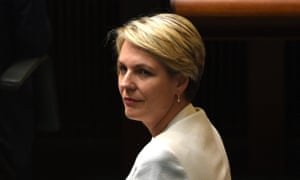

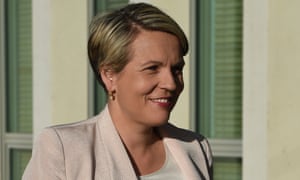
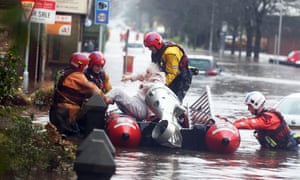





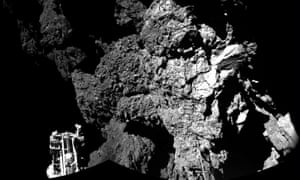


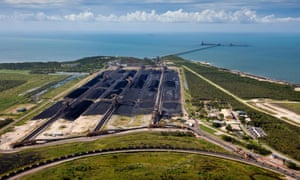
@lucykateclark
Later in the day, Malcolm Turnbull backed away from the story, saying “this is not a time for a political stoush about this” and that his government was “absolutely committed to ensuring that all Australian kids get a great education, whatever school they go to”.
Turnbull notably did not use the name of his old friend David Gonski, architect of the widely applauded review into education funding that in December 2011 recommended a six-year funding template that would see resources flow to children most in need. Needs-based, sector-blind funding that would ensure that all Australian kids would indeed get a great education, whatever school they go to.
Birmingham, too, later seemed to back off from his own interview. In a statement, he said “nothing has changed in relation to the Turnbull government’s policy on schools funding”.
Earlier, in the interview in which he categorically said the final two years of funding would not happen, he also said: “I want a school funding system that is genuinely needs-based and is targeting the money where it’s most required.”
Well, yes. This was the prime recommendation of the Gonski review in the first place, to direct money to those children who need it most: children from low socio-economic backgrounds, children with disabilities, Indigenous children, children in poor rural areas. The more layers of disadvantage, the more funding to be received.
As Gonski wrote in the report in December 2011, the proposed funding arrangements of the review – the full six years – would be “required to drive improved outcomes for all Australian students, and to ensure that differences in educational outcomes are not the result of differences in wealth, income, power or possessions”.
Everyone is singing from the same song sheet, but nobody can agree on the key.
Labor has not committed to the final two years of Gonski funding either, and the four states and one territory that signed up for it – New South Wales, South Australia, Victoria, Tasmania, and ACT – are left hanging about funding post-2017. They deserve to know where, exactly, the Turnbull government stands on the signed deals, but the obfuscation continues.
The recommendations of the Gonski review have been the best chance for needs-based funding this country has seen. The name Gonski – now elevated to the lexicon as a noun – has become synonymous with equity in education.
And equity in Australian education is an issue. Much is made of Australia’s standings in the OECD’s program for international student assessment (Pisa) results, the triennial rankings that tests 15-year-olds in maths, science and reading, and how, by that measure, our educational standards have been dropping over the past 15 years.
Although there is much controversy about whether we should even pay attention to comparing countries by measuring 15-year-olds in vastly different systems, there is another OECD measure that should be more concerning for the government than whether students in Shanghai are better at maths than students in Sydney.
That is the data that shows Australia is one of the below average performers for having a widening gap between the highest performing students and the lowest performing students in relation to socio-economic background. Despite claims made by successive education ministers that Australia has a “high quality, high equity” system, the truth is that the absolute measures of those doing well, and those who aren’t, are dictated by their background.
Simon Birmingham, one of the few LNP cabinet members who is a product of the public school system, says he supports parental choice, but what real choice is there if your local public school is so under-resourced and troubled that you would consider converting to Catholicism, as some parents do, or signing up for six or more years of financial stress to exercise that choice?
Real choice would mean that all Australians feel secure in the knowledge that all public schools are funded to a level that means their children will not be disadvantaged in any way by going to the local high school. That children with learning or physical disabilities will be supported, that those who are lagging would be brought up to speed, that the gaps would be closed.
If we can do this in our education system, we have a better chance to do this in society. Because all the fine talk of being an innovation nation profiting from a glorious ideas boom will come to naught if we can’t get the basics right – all children, regardless of postcode, having access to an excellent education.